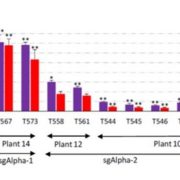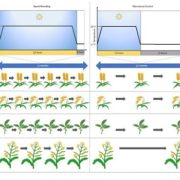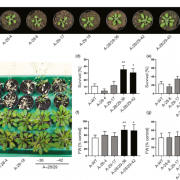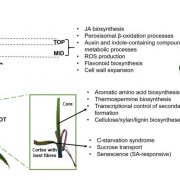Lessons on textile history and fibre durability from a 4,000-year-old Egyptian flax yarn (Nature Plants)
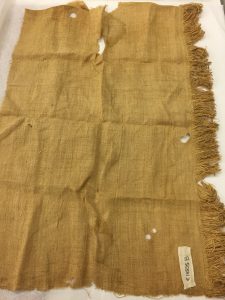 “Food, fuel, and fiber” sometimes is used to describe our utter dependence on plants, but often, other than cotton, the “fiber” part is under appreciated. However, there is a growing interest in bio-based materials, both for their greater recyclability and as an alternative to petroleum-derived materials (see ‘Biobased Composites for Mobility and Transportation: Moving towards Sustainability’). Flax (Linum spp.) has been a source of linen fibers for thousands of years. In a recent article, Melelli et al. used modern microscopy methods to compare the fibers from contemporary linen to those from a 4000 year old Egyptian cloth in order to investigate how the fibers aged and compare their microscopic structures. These methods included scanning electron microscopy (SEM), nano-tomography, second harmonic generation (SHG) imaging (which highlights crystalline cellulose in the cell walls), and atomic force microscopy tests in peak force quantitative nano-mechanical (AFM-PF-QNM). Collectively these approaches showed the skill with which the ancient Egyptians extracted the fibers, and noticeable differences between ancient and modern samples between the fiber diameter and lumen size. Importantly, the studies also demonstrate the extreme durability of the flax plant cell walls, supporting their ability to be used in strong and durable “next-generation environmentally friendly composite materials”. I wonder what tools will be available to examine these new materials 4000 years from now? (Summary by Mary Williams @PlantTeaching) Nature Plants 10.1038/s41477-021-00998-8
“Food, fuel, and fiber” sometimes is used to describe our utter dependence on plants, but often, other than cotton, the “fiber” part is under appreciated. However, there is a growing interest in bio-based materials, both for their greater recyclability and as an alternative to petroleum-derived materials (see ‘Biobased Composites for Mobility and Transportation: Moving towards Sustainability’). Flax (Linum spp.) has been a source of linen fibers for thousands of years. In a recent article, Melelli et al. used modern microscopy methods to compare the fibers from contemporary linen to those from a 4000 year old Egyptian cloth in order to investigate how the fibers aged and compare their microscopic structures. These methods included scanning electron microscopy (SEM), nano-tomography, second harmonic generation (SHG) imaging (which highlights crystalline cellulose in the cell walls), and atomic force microscopy tests in peak force quantitative nano-mechanical (AFM-PF-QNM). Collectively these approaches showed the skill with which the ancient Egyptians extracted the fibers, and noticeable differences between ancient and modern samples between the fiber diameter and lumen size. Importantly, the studies also demonstrate the extreme durability of the flax plant cell walls, supporting their ability to be used in strong and durable “next-generation environmentally friendly composite materials”. I wonder what tools will be available to examine these new materials 4000 years from now? (Summary by Mary Williams @PlantTeaching) Nature Plants 10.1038/s41477-021-00998-8



